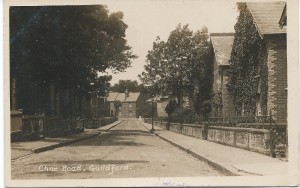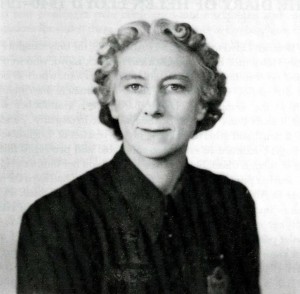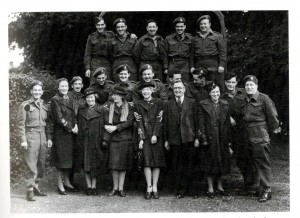Our researcher Liz Lloyd has been looking into the life of Dr Sells Sr and his creative vision for Charlotteville, which has endured, making this part of Guildford distinctive, even today.
Thomas Jenner Sells MRCS and JP 1811-1879
Thomas Jenner Sells was born on February 25th 1811 in Clarendon, Jamaica, the son of William Sells, Practitioner of Medicine, and his wife, Euphemia. William Sells was a surgeon in Jamaica for several years. B. W. Higman in, “Slave Populations of the British Caribbean 1807-1834,” quotes William Sells recommendation in 1815 that slave women should have, “proper lying-in houses,” for safe delivery of their babies, “with attention from a medical Practitioner.” In 1823 William published his own work, “Remarks on the Condition of Slaves in the island of Jamaica.” In November 1826 he and his family left Jamaica and by 1841 he was living in Kingston-upon-Thames where he died in September.
After completing his medical training, Thomas Jenner Sells settled in Guildford in about 1840. He worked and lived with the elderly surgeon William Newland, whose practice he took over. He was later in practice with Caleb Woodyer and James Stedman. On July 19th 1842 Thomas married Charlotte, the daughter of Rev. John Stedman and they settled at 109 High Street. In 1846 and again in 1851, Thomas was elected Mayor of Guildford and in 1856 he was a member of St Mary’s burial board.
Thomas and Charlotte had six children, four sons and two daughters. Charles John Sells and Hubert Thomas Sells followed their father into medicine, William Sells became a clergyman and Edward Jenner Sells became a bank cashier. In addition to his everyday medical duties, Thomas took over the private lunatic asylum at Leapale House. His partner at first was William S. Wilson, who married Thomas Sells’ daughter, Euphemia, two years later. By her early 40s, she was a widow and spent the rest of her life living with her younger sister, Frances Duncomb Sells, who had never married.
In 1852 Thomas Jenner Sells participated in the investigation into the horrific murder of a 3 year old child in Albury. John Keene and his wife Jane were accused of drowning her illegitimate child, Charlie Broomer, in a well in February 1851. Mrs Keene’s mother, Ann Broomer, had reported her fears to Police Superintendent Josiah Hawkins Radley stationed at Guildford and he took a well-digger to Warren Well near Albury Heath. On finding remains, they summoned Dr Sells. Thomas Sells testified that the body had been in the well for at least a year and he produced the skull, which he had put back together, to show to the Court.
Other testimonies included that of Mr Ames, Master of Guildford Union Workhouse, who reported that Jane Keene had been admitted to the Workhouse after dark on January 10th 1851 accompanied by two children, 3 year old Charlie Broomer and a baby born a few weeks before to Jane and her husband John. She had left the Workhouse with her children on February 6th. On 16th February she returned to the Workhouse with her husband John and her youngest child, saying that Charlie was with her mother in Albury. In spite of the fact that all the evidence was hearsay, at the end of the trial Jane Keene was acquitted but her husband was condemned to death for murder.
One of the other cases involving Thomas occurred in 1864 when there was a quarrel between two boys from a gypsy encampment on Whitmoor Common. One boy, John Stacey, was stabbed. Dr Sells dressed his wound and then sent the boy to the Workhouse although his assailant had escaped towards Woking. In January 1865 an inquest was held on the death of Thomas Philips, a fruit hawker from Kingston. He had been arrested the previous week for being drunk in the street and as he was very unwell at the police station Dr. Sells directed that Philips should be removed to Guildford Union Workhouse. While at the workhouse, he fell and died.
T. J. Sells was a man of his time, an entrepreneur with a social conscience. He was actively involved in the management of two Friendly Societies, the Ancient Order of Foresters and the West Surrey General Benefit Society which provided sick pay to its subscribers. In 1865 he was elected chairman of the Working Men’s Institution, now better known as the Guildford Institute. He was co-founder of the town’s first public hall for the Guildford Institute in North Street. He was an Alderman of the town, a magistrate and during the last few years of his life, a justice of the peace.
In 1862 Thomas Jenner Sells purchased a large plot of land at the south-eastern end of Guildford with the intention of building many houses. Thomas Sells worked with Henry Peak, the town’s first Borough surveyor, and the design for one of the first housing estates in the town took shape. Thomas Sells named the area after his wife, Charlotte, and all the roads were named after famous physicians. Charlotteville, one of the earliest planned suburbs in Britain, was planned to have a social mix, with large villas to purchase and small terraced cottages to rent. The gradual building of this, “urban village,” continued after the death of T. J. Sells, but in 1867 at an anniversary dinner for the local Forresters’ Lodge, Thomas commented that, “He hoped he had shown his fellow townsmen the best way to spend their money. Every mechanic should live in his own home.”
Thomas earned the respect of his peers in Victorian Guildford. At a Forresters’ Dinner in 1865 his health was toasted by the chairman for being, “A skilful, courteous gentleman who thought no trouble too much in looking after his patients.” In 1864 his innovation in establishing Charlotteville earned the praise of the Surrey Advertiser, “Mr Sells deserves success and we cannot too highly commend that private enterprise which while it conduces to such success, improves the town and confers a lasting obligation upon the inhabitants.”
Thomas Jenner Sells continued to take an active part in civic duties until shortly before his death. He died at the age of 68 after a few weeks illness. In March 1879, two years after his wife, Charlotte, he was buried in the Mount cemetery in Guildford.
Elizabeth Lloyd
Resources
Diaries of Henry Peak edited by Roger Nicholas
Census and Parish records from www.Ancestry.co.uk
British Newspapers Archive www.findmypast.co.uk
Times Digital Archive
www.guildfordinstitute.co.uk


